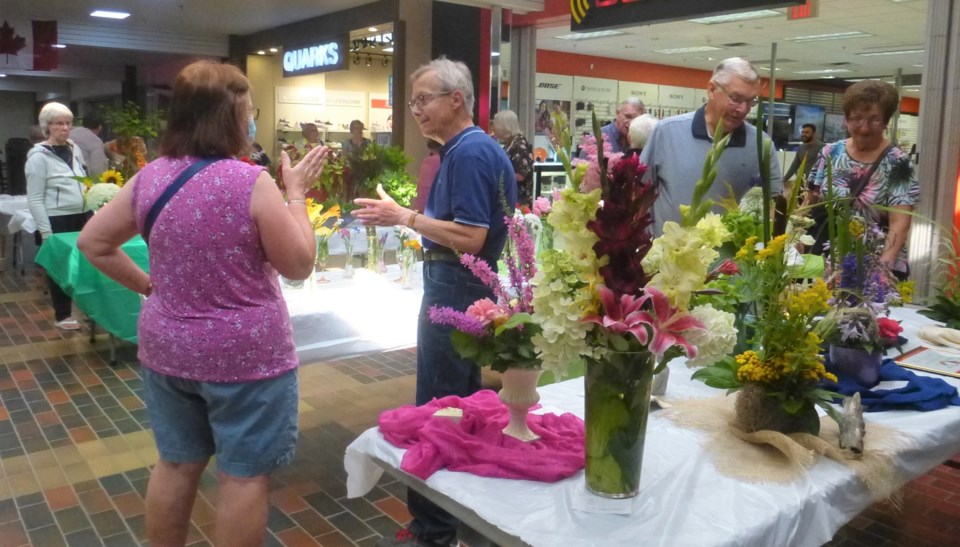YORKTON - Just in time for spring planting! The Yorkton and District Horticultural Society held their annual Spring Plant and Bulb Sale on Friday, June 2 at the Parkland Mall, Yorkton!
There was a good variety of plants and bulbs, and eager gardeners were on hand to answer questions.
Just a little update: we chatted recently about a friend sowing seeds in the fall; it’s exciting to hear from her that her peas came up very nicely, and she has had success with volunteer lettuce for years now. Another gardener had great success with spinach planted last fall and was looking forward to a delicious early salad; but the birds visited the “salad bar” before she did! But we’ll have to keep this interesting planting idea on our “to-do” list this fall!
Are you familiar with “tabletop gardens” or dish gardens? The look of these was very interesting and made me want to learn more about them. It is a common thing to picture our outdoor space as an extension of our living space; our patio tables can become a thing of beauty with a dish garden as a “‘centrepiece”.
The dish gardens often use succulents. What are succulents? They are not a type of plant, but plants that have certain characteristics: their ability to store water in their leaves and stems. The plants are fleshy looking and a gardener’s favorite because they don’t mind dry and hot conditions. Succulents come in a wide variety of shapes and sizes and colors, making them wonderful candidates for a most interesting and beautiful dish garden.
Choose a container that is low and wide, so that we can easily see their textures and colors. Most important rule: soil that drains well, preferably soil that is on the sandy side. These plants do not like to have wet feet and will be much more forgiving of us forgetting to water them once in a while, rather than watering them too much. We should water them only when they are dry.
While we like the look of a full and tightly packed dish garden, when we are just getting them started, we have to be sure to give them room to grow and fill in. Plant all the plants at the same level in the container. We can give them a weak fertilizer every four or five weeks.
Good plant choices? The much beloved hens and chicks; burrow’s tail; echeveria (stonecrop), or euphorbia crown of thorns. Don’t forget to add little accent items like a small piece of driftwood, shells, rocks, or small terra cotta pots, laid on their side as if the plants are tumbling out.
For gardeners with limited space, dish gardens can be a lovely way to add an accent piece when there is not a lot of space for larger things like statues or fountains. There is still lots of room for beauty and interest in a small gardening space, just keep things in proportion.
Keep in mind, too, that dish gardens can be made with other favorite plants; careful selection is the thing that makes them different from an ordinary collection of plants in a container. We might choose one marigold and trim the bottom leaves to five the impression of a tree; thyme can be the “groundcover”; and a unique grass or the shapely rush can add interesting textures. Some sparkling glass pebbles and rocks to finish, and it’s an amazing conversation piece!
Thank you to our friends at YTW for their wonderful work; have a great week!





